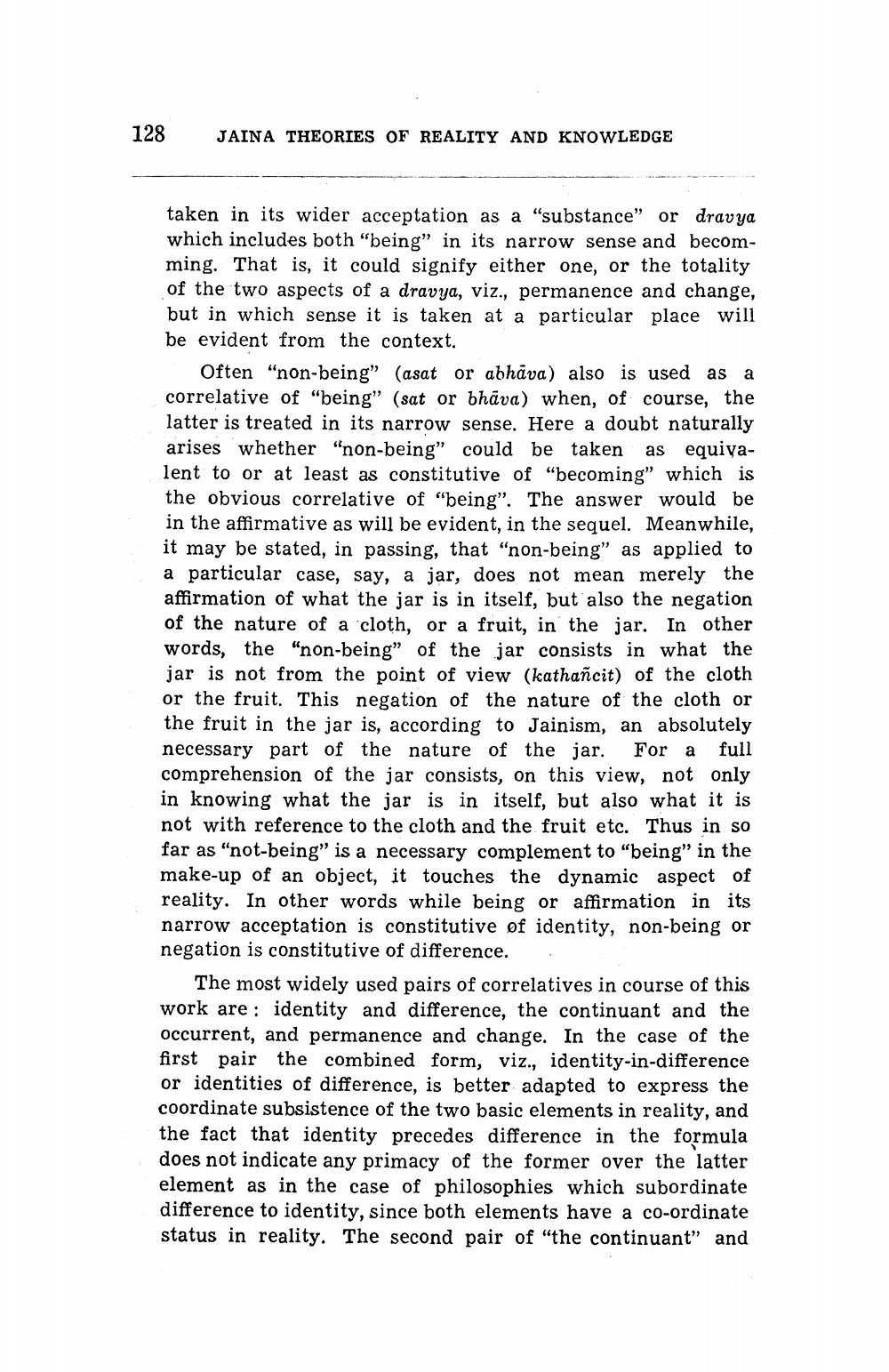________________
128
JAINA THEORIES OF REALITY AND KNOWLEDGE
taken in its wider acceptation as a “substance" or dravya which includes both "being” in its narrow sense and becomming. That is, it could signify either one, or the totality of the two aspects of a dravya, viz., permanence and change, but in which sense it is taken at a particular place will be evident from the context.
Often "non-being" (asat or abhava) also is used as a correlative of "being" (sat or bhāva) when, of course, the latter is treated in its narrow sense. Here a doubt naturally arises whether "non-being" could be taken as equivalent to or at least as constitutive of "becoming” which is the obvious correlative of "being”. The answer would be in the affirmative as will be evident, in the sequel. Meanwhile, it may be stated, in passing, that "non-being" as applied to a particular case, say, a jar, does not mean merely the affirmation of what the jar is in itself, but also the negation of the nature of a cloth, or a fruit, in the jar. In other words, the "non-being” of the jar consists in what the
jar is not from the point of view (kathañcit) of the cloth or the fruit. This negation of the nature of the cloth or the fruit in the jar is, according to Jainism, an absolutely necessary part of the nature of the jar. For a full comprehension of the jar consists, on this view, not only in knowing what the jar is in itself, but also what it is not with reference to the cloth and the fruit etc. Thus in so far as "not-being" is a necessary complement to "being" in the make-up of an object, it touches the dynamic aspect of reality. In other words while being or affirmation in its narrow acceptation is constitutive of identity, non-being or negation is constitutive of difference.
The most widely used pairs of correlatives in course of this work are: identity and difference, the continuant and the occurrent, and permanence and change. In the case of the first pair the combined form, viz., identity-in-difference or identities of difference, is better adapted to express the coordinate subsistence of the two basic elements in reality, and the fact that identity precedes difference in the formula does not indicate any primacy of the former over the latter element as in the case of philosophies which subordinate difference to identity, since both elements have a co-ordinate status in reality. The second pair of "the continuant" and




